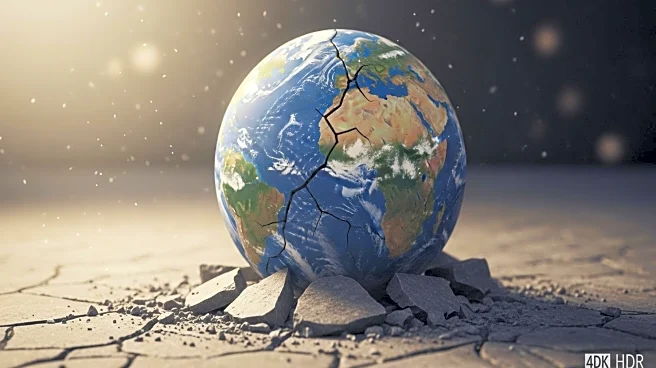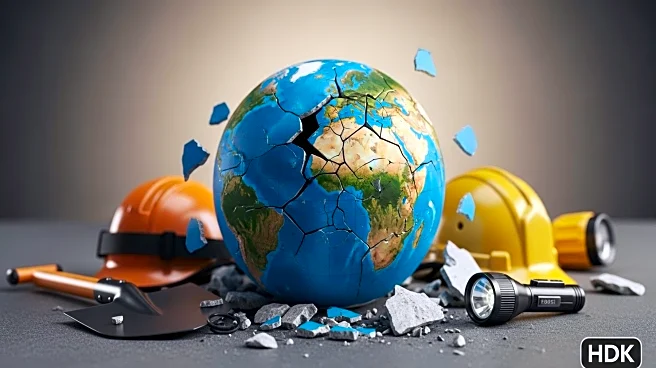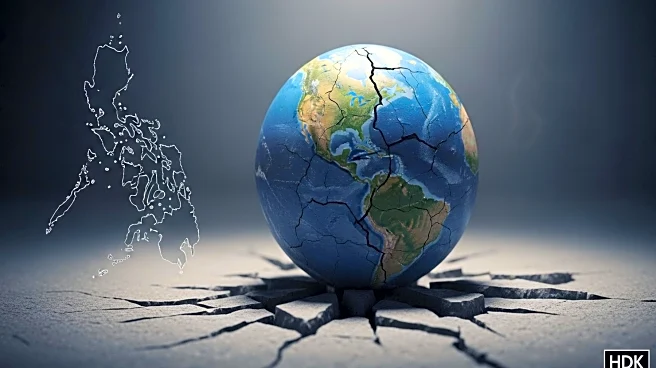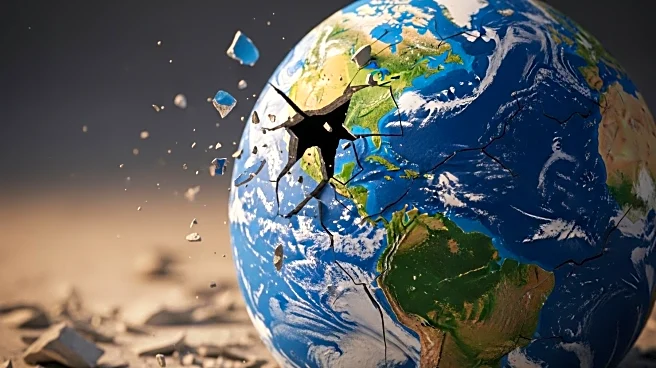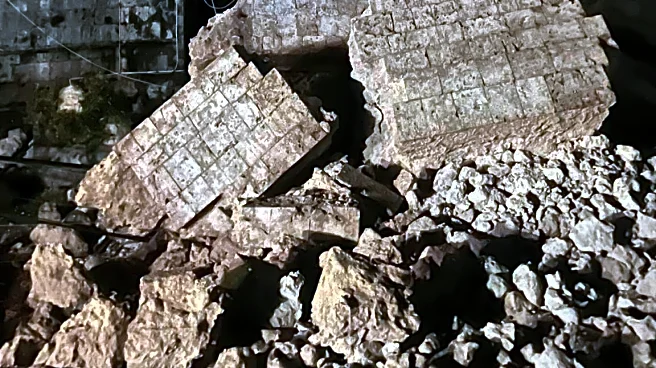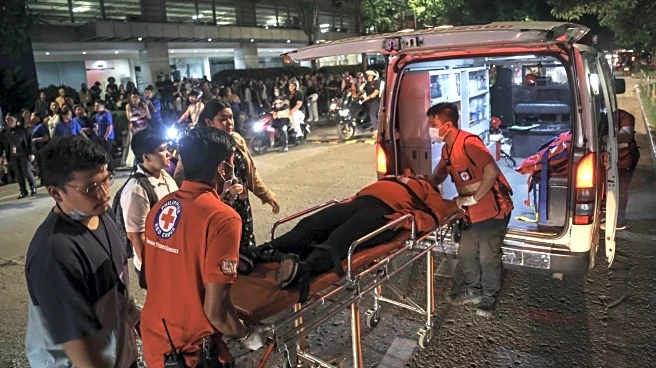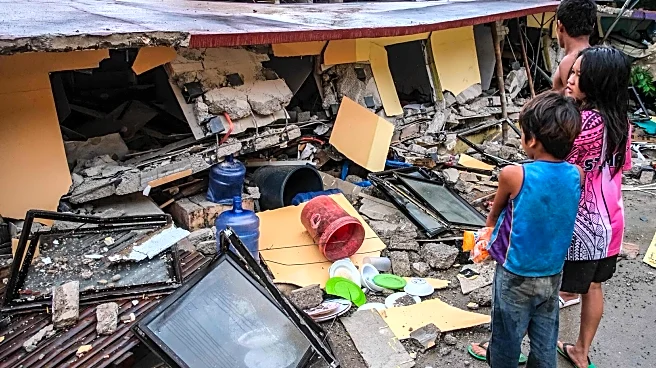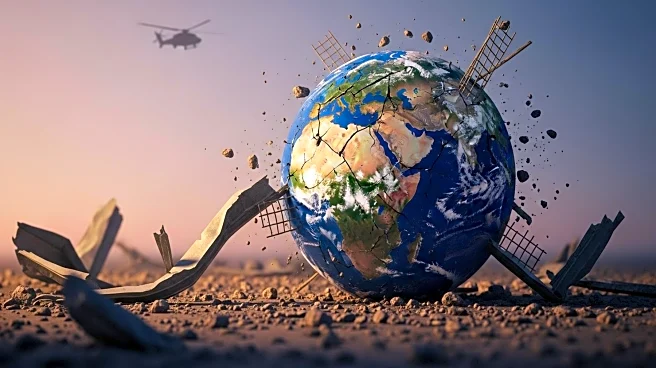What's Happening?
A magnitude-6.9 earthquake struck the central Philippines, particularly affecting the city of Bogo in Cebu province. The earthquake resulted in at least 69 fatalities and numerous injuries. Rescue operations are being conducted with the help of backhoes and sniffer dogs to locate survivors trapped under debris. The earthquake's epicenter was near Bogo, and the tremor has caused significant structural damage, including landslides and impassable roads. The Philippine government is considering seeking international aid based on ongoing damage assessments.
Why It's Important?
This earthquake is one of the most powerful to hit the region in over a decade, highlighting the Philippines' susceptibility to natural disasters due to its location on the Pacific 'Ring of Fire.' The immediate humanitarian impact is severe, with a high death toll and extensive damage to infrastructure. The disaster could have long-term economic implications, affecting local economies and necessitating substantial recovery efforts. The event underscores the importance of disaster preparedness and the need for international cooperation in relief efforts.
What's Next?
Authorities are focused on rescue and relief operations, with the potential for international assistance being evaluated. The earthquake has prompted a temporary suspension of schools and government offices in affected areas. The risk of aftershocks remains, and residents are advised to stay alert. The international community has expressed condolences and readiness to support the Philippines in its recovery efforts.
Beyond the Headlines
The earthquake may lead to a reassessment of disaster management policies and infrastructure resilience in the Philippines. The event also highlights the need for improved early warning systems and community preparedness to mitigate the impact of future natural disasters.

